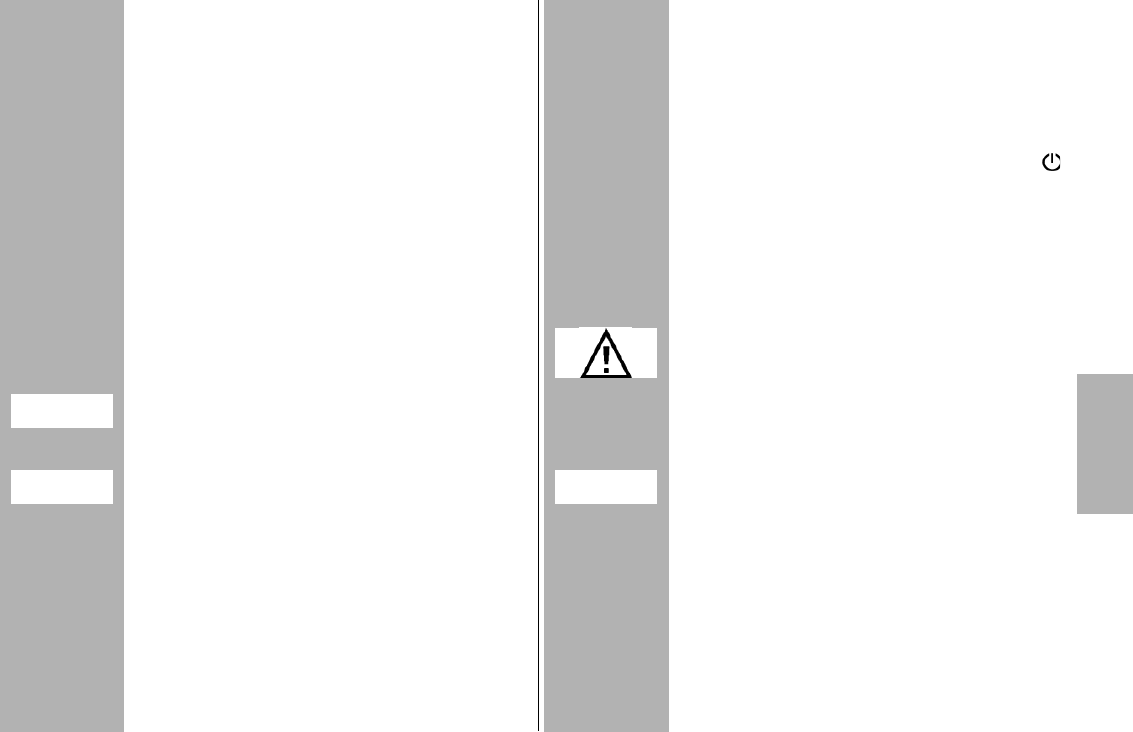115
3 Preparing the flash unit for use
3.1 Power supply
Suitable batteries/rechargeable batteries
The flash unit can be operated with any of the follo-
wing batteries:
• 4 nickel-metal-hydride batteries 1.2V, type IEC
HR6 (size AA). They have a significantly higher
capacity than NiCad batteries and are less harm-
ful to the environment, since they have no cadmi-
um.
• 4 alkaline-manganese dry cell batteries 1.5V, type
IEC LR6 (size AA). Maintenance-free power source
for moderate power requirements.
• 4 lithium batteries 1.5V, type IEC FR6 (size AA).
Maintenance-free high-capacity power source
with a low self-discharge rate.
Please only use the power sources given above. If
other power sources are used, there is a risk of
damaging the flash unit.
If your flash unit is not going to be used for an
extended period of time, remove the batteries.
Replacing batteries
The disposable/rechargeable batteries are empty or
used up if the recycling time (time from the trigge-
ring of a full-power flash, e.g. in the M mode, to the
moment the flash-ready indicator lights up again)
exceeds 60 seconds. In addition, the battery war-
ning appears on the touch display.
• Switch off the flash unit. To do this, press the
button until all displays turn off.
• Remove flash unit from the camera, push battery
cover downwards and open.
• Insert batteries lengthwise according to the batte-
ry symbol indicated.
• Close battery cover and push upwards.
When inserting batteries, ensure that the polarity is
correct and matches the symbols in the battery com-
partment. Inserting the batteries in the wrong directi-
on can destroy the flash unit! Always replace all batte-
ries simultaneously, and make sure that batteries are
the same brand and have the same capacity.
Flat or dead batteries should not be disposed of
with ordinary household waste. Help protect the
environment, and dispose of flat/dead batteries at
the appropriate collection points.

